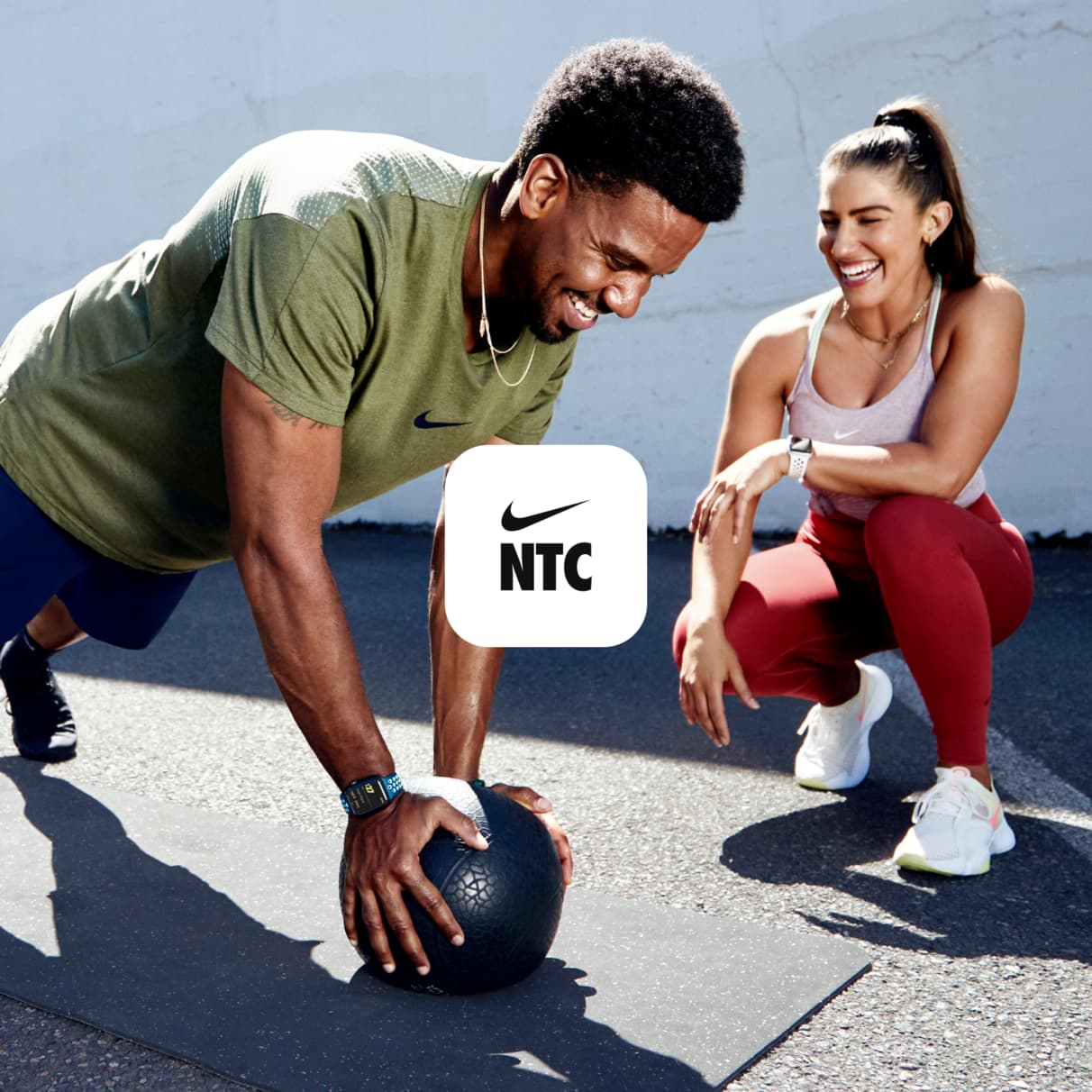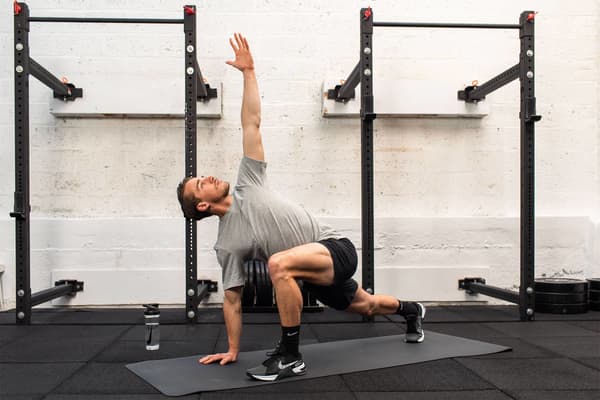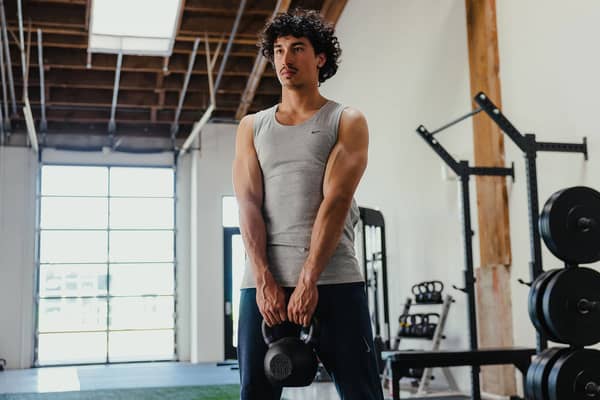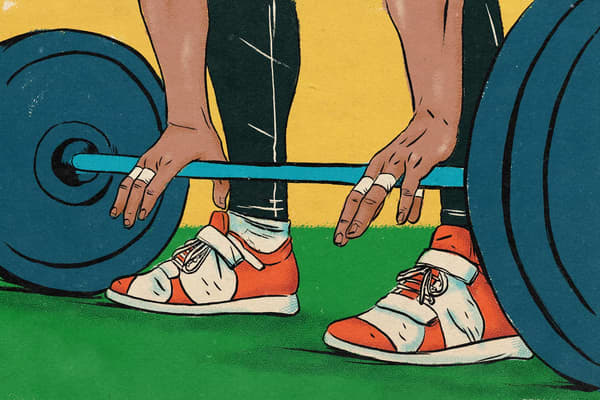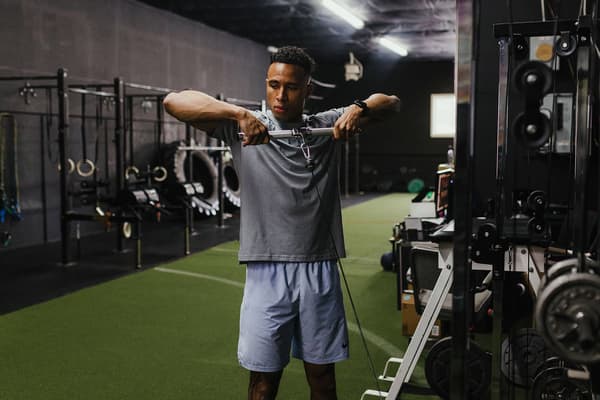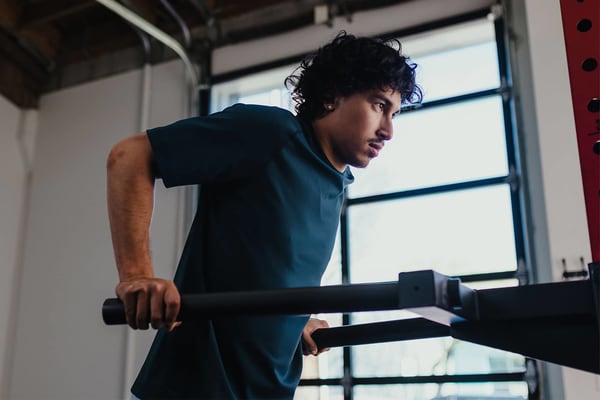The Best Weights for At-Home Workouts
Sports & Activity
When it comes to weights for your workout, you have options. From dumbbells and kettlebells to resistance bands, here’s how to build an at-home workout.

You may think you need a pricey gym membership to see results from your fitness routine. But your living room can be just as good as a fancy studio — with the right resistance-training equipment.
“Working out at home is a very convenient way to achieve your fitness and strength goals,” says Jose Rodriguez, CSCS, a former strength and conditioning coach for Princeton University. Not only can you avoid crowds and commutes, but you can easily fit at-home workouts into your schedule.
Get started at home with this guide to weights for workouts.
Choosing Weights for Workouts
The first step to bringing your workouts home is getting set up with the right equipment. Here’s a quick breakdown of several options to consider for weight training.
Dumbbells
These hand weights are short bars with a fixed weight on either end. However, you can save space and money with a set of adjustable dumbbells. These have removable plates or blocks of various weights, which allow you to lift both light and heavy weights.
While you won’t be able to lift as much weight using dumbbells as you would with barbells, you can address any imbalances in size and strength between the left and right sides of your body, says Joe Johnson, a certified personal trainer and owner of 9 to 5 Nutrition.
Kettlebells
Kettlebells are another type of free weight. These are cast-iron weights shaped like a ball with a handle fixed to the top. You can grip the handle and perform exercises that combine cardio and strength like swings, cleans and snatches.
You can also use kettlebells for standard lifts like squats, deadlifts and military presses. Unlike dumbbells, kettlebells are typically sold as a single unit.
Barbells
In gyms across the world, you’ll spot athletes performing barbell back squats and barbell bench presses. These long, straight bars have to be gripped with two hands to lift the maximum amount of weight. (Note: You can increase weight by adding plates at either end).
“For this reason, barbells are great for overall strength and muscle-building,” Johnson says. The downside: Barbells take up a ton of space. This means they may not be an ideal choice for many home gym workouts.
Resistance Bands
Resistance bands are elastic bands used for strength training. You can find these in the form of loop bands, tube resistance bands with handles, and mini resistance bands. Depending on the type, you can use resistance bands for exercises like rows and shoulder presses.
Or, you can add them to body-weight workouts like squats, glute bridges, and clamshells. You can also use resistance bands to perfect your form while doing pull-ups and push-ups. As an added perk: Bands are portable, inexpensive, and easy to store.
Medicine Balls
A medicine ball is a weighted, soft-shell ball designed to bounce back when thrown against a wall or the ground. They’re typically weighted down with sand or gel and are available in a variety of weights and sizes.
Medicine balls are great for throwing, tossing, carrying, or adding resistance to a movement. And they can be used for full-body compound exercises that combine cardio and strength, Rodriguez says. Plus, they add a fun element to your workouts.
Suspension Trainers
Suspension trainers feature heavy-duty adjustable straps, handles and foot straps. Attach the suspension trainer to a sturdy anchor point, grip the handles or place your feet in the foot straps, and perform exercises such as inverted rows, hamstring curls, squats, and biceps curls.
Suspension trainers take advantage of gravity to provide resistance through a variety of movements, Rodriguez says.
Deciding How Many Weights to Buy
The equipment you purchase for your at-home workouts will depend on your budget. Realistically, all you need to get stronger and fitter at home is a set of adjustable dumbbells.
“The ease of clicking from one weight [increment] to the other is unmatched,” Rodriguez says. For maximum versatility, invest in a set that can go from 5 to 55 pounds per dumbbell.
“If you’re getting non-adjustable dumbbells, I’d recommend going up in increments of 8 pounds at the most,” Johnson says. But buying a more comprehensive range of equipment enables you to do various exercises, which leaves you with fewer workout excuses.
When deciding what to buy, start by looking at the space you have to dedicate to your home gym. Consider the size, floor type, and possible constraints (think: downstairs neighbors). “Once those things are taken into account, you can decide what you’d like to invest in,” Johnson says.
A few must-haves that Rodriguez recommends include:
- Resistance bands
- Medicine balls (note: these may not be great for apartment-dwellers)
- Suspension trainers
If you have a garage or basement where you can spread out, consider adding a 45-pound barbell, rack, and 300-pound weight plate set.
How to Create An At-Home Workout Plan
Once you have your weights, it’s time to put them to use. Follow these expert tips for creating an at-home workout plan.
1.Set Your Schedule
Decide how many days per week you can commit to working out and how long each session will be. Make sure your exercise routine fits into your day and takes your fitness level into account.
“The easiest thing to do is push your workout to tomorrow when things get hectic and the day winds down. Make a schedule that sets you up for success,” Rodriguez says. Start with 30-minute workouts two or three times a week and build from there.2.Create the Perfect Space
Set up your home workout area so it’s exactly the way you want it. Keep your equipment organized and your space clear of clutter.
Set the tone with music, light an energizing oil diffuser, and/or position yourself in front of a window for outdoor views. If you enjoy being in that space, you’ll be more likely to get your workouts done.3.Build Your Workout Routine
Every effective workout starts with a warm-up. “This prepares you for everything you’re about to do in the gym,” Rodriguez says. Or in this case, at home. Start with a five-minute routine that loosens you up from head to toe and gets your heart pumping.
From there, build a routine that’s tailored to your goals and lifestyle. As a general rule, if you’re training one to three days a week, stick to full-body workouts that hit each of your major muscle groups. Johnson says that if you’re spending four to five days in your home gym, dedicate at least two of those workouts to your upper body and two to your lower body.
Pick at least one exercise from each of the following categories:- Squat (ex. back squat, front squat, split squat/lunge)
- Hip hinge (ex. deadlift, sumo deadlift, hip thrust)
- Vertical press (ex. military press, dumbbell overhead press, seated dumbbell press, overhead triceps press)
- Horizontal press (ex. bench press, incline dumbbell press)
- Vertical pull (ex. pull-up, lat pulldown)
- Horizontal pull (ex. bent-over row, renegade row)
Aim to perform 10 to 20 sets of 5 to 20 reps (depending on your goals and fitness level) total each week of each category.
Cap off each workout with a cool down to give your muscles a chance to relax. Take five to 10 minutes to stretch and bring your heart rate closer to resting.
